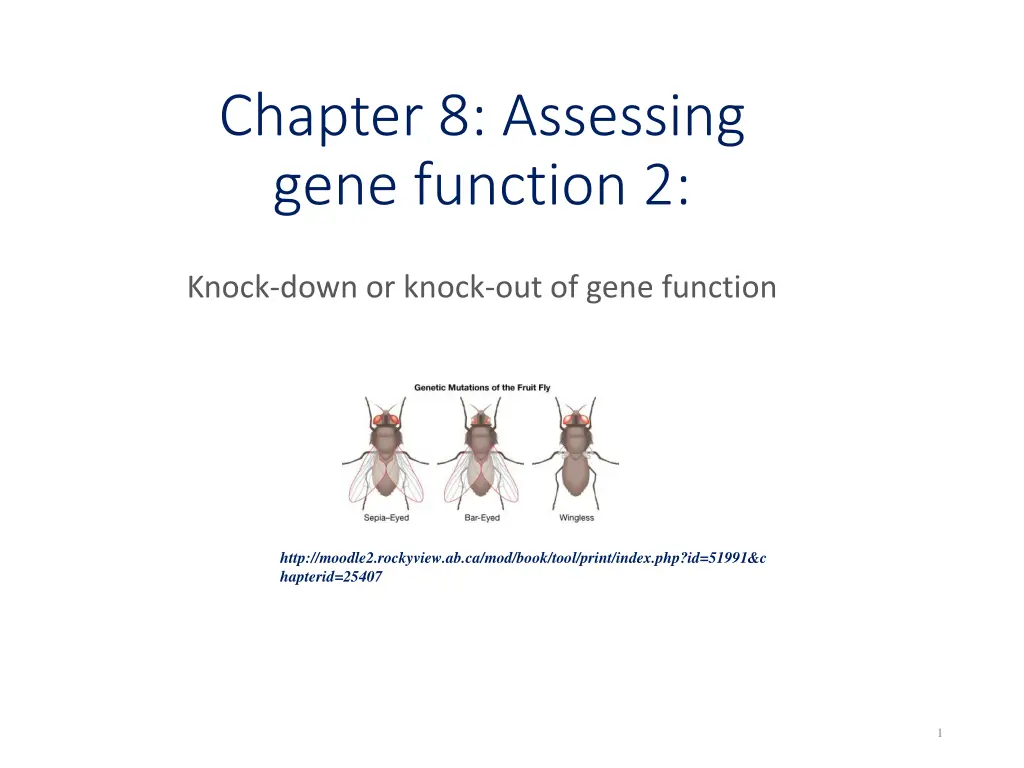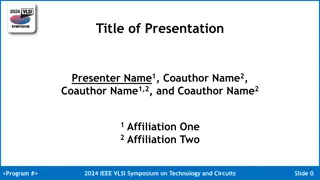
Understanding Gene Function through Knock-down and Knock-out Methods
Explore the rationale behind knock-down and knock-out methods to assess gene function, including terminology related to genetic mutations and traditional approaches in genetic studies. Gain insights into how these methods provide valuable information about gene function.
Download Presentation

Please find below an Image/Link to download the presentation.
The content on the website is provided AS IS for your information and personal use only. It may not be sold, licensed, or shared on other websites without obtaining consent from the author. If you encounter any issues during the download, it is possible that the publisher has removed the file from their server.
You are allowed to download the files provided on this website for personal or commercial use, subject to the condition that they are used lawfully. All files are the property of their respective owners.
The content on the website is provided AS IS for your information and personal use only. It may not be sold, licensed, or shared on other websites without obtaining consent from the author.
E N D
Presentation Transcript
Chapter 8: Assessing gene function 2: Knock-down or knock-out of gene function http://moodle2.rockyview.ab.ca/mod/book/tool/print/index.php?id=51991&c hapterid=25407 1
Rationale of knock-out, knock-down Used for eliminating or reducing the expression of a gene in an organism, resulting in a loss-of-function of the gene The resulting phenotype change will inform the scientist about the function of the gene Example: A knock-out of a specific gene results in fruit flies with altered wings: in the case below, each of the genes knocked out affects development of the wings 2
Terminology to know: Amorph- a genetic mutation that completely lacks gene function Hypomorph a genetic mutation with reduced (but not zero) function It can be difficult to demonstrate that a particular mutation is really an amorph These are LOSS OF FUNCTION mutations- i.e. the function is either reduced or eliminated 3
Terminology to know: Hypermorph- a genetic mutation that leads to overproduction or excessive activity of the product Regulatory sequences change to promote more transcription Inability to inactivate or down regulate the function Neomorph a genetic mutation with a new function, not seen in wild type Expressed in tissues/times not normally expressed Localized to a place in the cell not normally found Interacts with other proteins or cell components not seen in wild type These are GAIN OF FUNCTION mutations- i.e. overexpression or novel functions 4
Traditional approach to gene function 1. 2. 3. (3:1 segregation ratio) Mutagenize a population (chemical, radiation) Screen F2/F3 generation for mutants, 10,000-100,000 lines Most mutants are homozygous for recessive mutant allele Phenotype gives overall gene function: Since mutant allele results in defective wing development, the corresponding wild type allele is required for normal wing development But, it is a long process to identify the altered gene based on single-nucleotide Mutation Called forward genetics wild type mutant 5
Alternative forward genetic approaches Large scale induction of mutations using insertional elements genetics Called insertional activation Introduce insertional element, insertion is random Isolate mutations, based on phenotype and then identify the gene the element inserted into Use knowledge of the element sequence to find the sequence next to it (the inactivated or mutated gene) 6






















